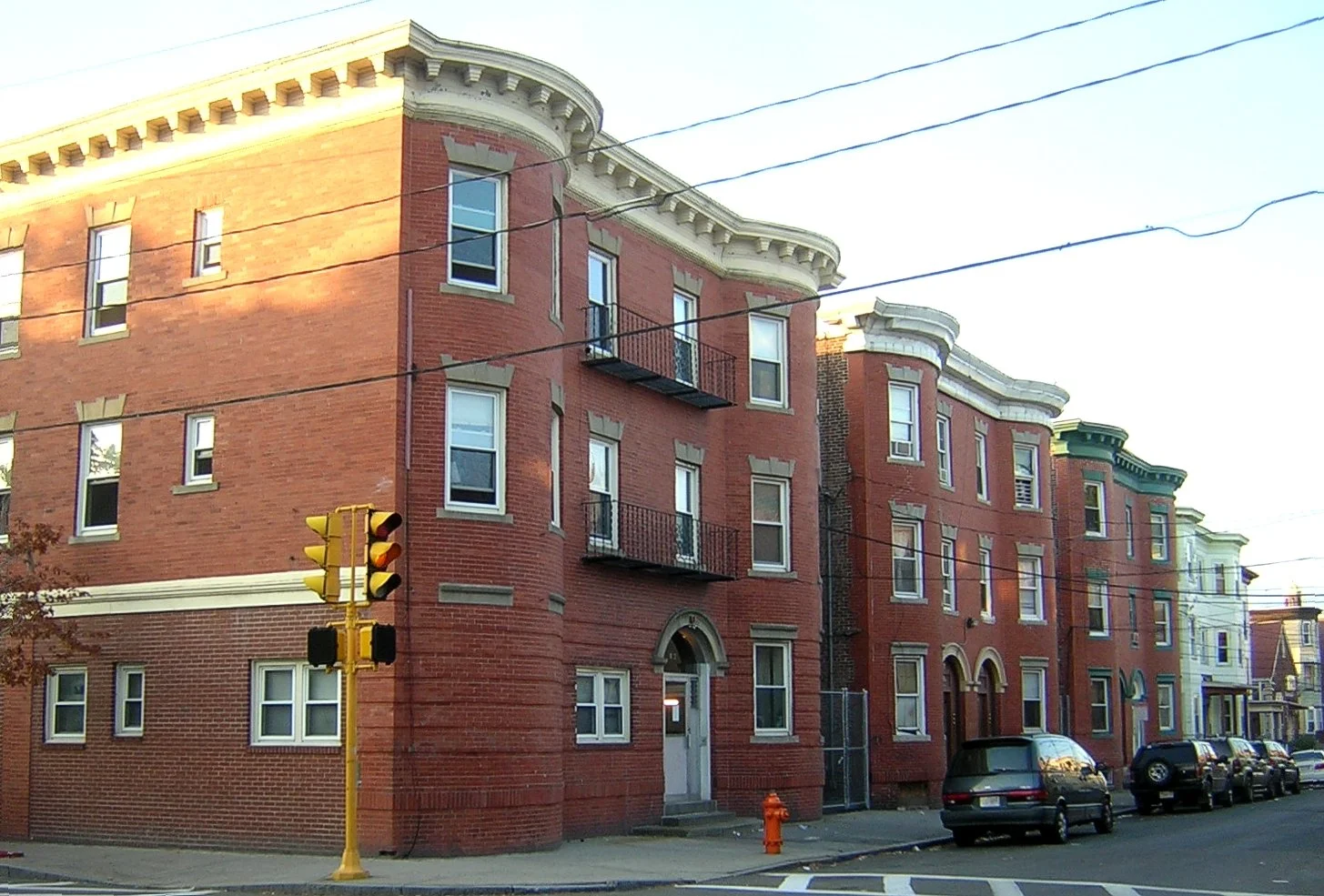Llewellyn King: Trump Regime heavily Uses fear as its most potent Weapon
WARWICK, R.I.
Something new has entered American consciousness: fear of the state.
Not since the Red Scares (the first one followed the Russian Revolution and World War I, and the second followed World War II and the outbreak of the Cold War) has the state taken such an active role in political intervention.
The state under Donald Trump has an especial interest in political speech and action, singling out lawyers and law firms, universities and student activists, and journalists and their employers. It is certain that the undocumented live in fear night and day.
Fear of the state has entered the political process.
Presidents before Trump had their enemies. Nixon was famous for his “list” of mostly journalists. But his political paranoia was always there and it finally brought him down with the Watergate scandal,
Even John Kennedy, who had a soft spot for the Fourth Estate, took umbrage at the New York Herald Tribune and had that newspaper banned for a while from the White House.
Lyndon Johnson played games with and manipulated Congress to reward his allies and punish his enemies. With reporters it was an endless reward-and-punishment game, mostly achieved with information given or withheld.
The Trump administration is relentless in its desire to root out what it sees as state enemies, or those who simply disagree with it. They include the judicial system and all its components: judges, law firms and advocates for those whom it has disapproved of. If an individual lawyer so much as defends an opponent of the administration, that individual will be “investigated” which, in this climate, is a euphemism for persecuted.
If you are investigated, you face the full force of the state and its agencies. If you can find a lawyer of stature to defend you, you will be buried in debt, probably out of work and ruined without the “investigation” turning up any impropriety.
One mighty law firm, Paul, Weiss, faced with losing huge government contracts, bowed to Trump. It was a bad day for judicial independence.
The courts and individual judges are under attack, threatened with impeachment, even as the state seeks to evade their rulings.
Others are under threat and practice law cautiously when contentious matters arise. The price is known: Offend and be punished by loss of government work, by fear of investigation and by public humiliation by derision and accusation.
The boot of the state is poised above the neck of the universities.
If they allow free speech that doesn’t accord with the administration’s definition of that constitutional right, the boot will descend, as it did on Columbia.
Shamefully, to try to salvage $400 million in research funds, Columbia University caved. Speech on that campus is now circumscribed. Worse, the state is likely emboldened by its success.
Linda McMahon, the education secretary, has promised that with or without a Department of Education the administration will go after the universities and what they allow and what they teach, if it is antisemitic, as defined by the state, or if they are practicing diversity, equality and inclusion, a Trump irritant.
One notes that another university, Georgetown, is standing up to the pressure. Bravo!
At the White House, Press Secretary Karoline Leavitt has decided to usurp the White House Correspondents’ Association and determine herself who will cover the president in the reporters’ pool -- critical reporting in the Oval Office and on Air Force One.
Traveling with the president is important. That is how a reporter gets to know the chief executive up close and personal. A pool report from a MAGA blogger doesn’t cut it.
Trump has threatened to sue media outlets. If they are small and poor, as most of the new ones are, they can’t withstand the cost of defending themselves.
ABC, which is owned by Disney, caved to Trump even though its employees longed for the case to be settled in court. But corporate interests dictated accommodation with the state.
Accommodate they have and they will. Watch what happens with Trump’s $20 billion lawsuit against CBS’s 60Minutes. The truth is obvious, the result may be a tip of the hat to Trump.
Nowhere is fear more redolent, the state more pernicious and ruthless than in the deportation of immigrants without due process, without charges and without evidence. ICE says you are guilty and you go. Men wearing masks double you over, handcuff you behind your back and take you away, maybe to a prison in El Salvador.
Fear has arrived in America and can be felt in the marbled halls of the giant law firms, in newsrooms and executive offices, all the way to the crying children who see a parent dragged off by men in black, wearing balaclavas, presumably for the purpose of extra intimidation.
Llewellyn King is executive producer and host of White House Chronicle, on PBS, as well as an international energy-sector consultant and speaker/ His email is llewellynking1@gmail.com and he’s based in Rhode Island.
‘What else can they become?’
Work by Cynthia Atwood (polish, fabric, paint, interior fan, extension cord), in her joint show with Mark Lorah, “Visceral Resonance,’’ at AVA Gallery and Art Center, Lebanon, N.H., through May 1o.
She says she is “attracted to materials and takes pleasure in handling and pushing them and wonders what else they can become? I enjoy being struck by a concept and then playing with it, wondering how the concept can become an object and visa versa.’’
Beloved Peak
Bascom Lodge (in honor of John Bascom) and Saddle Ball Mountain looking southwest from the War Memorial Tower on Mt. Greylock, which, at 3,489 feet, is the highest mountain in Massachusetts.
“Greylock, our daily pleasure, our constant symbol, our ever renewed inspiration, for all who have fellowship with Nature.’’
— John Bascom (1827-1911), a professor of rhetoric at Williams College, in Williamstown,Mass., in 1855-1874 and president of the University of Wisconsin in 1874-1887. He died in Williamstown, close to Greylock, in his beloved Berkshires.
Chuck Collins: Dismantling the IRS only helps Billionaire tax Dodgers
Houses (mostly for the summer) of the very rich in Watch Hill, R.I.
— Photo by JJBers
U.S. Treasury Department estimates of unpaid taxes indicate that over half of all unpaid taxes are attributable to the top 5 percent of earners.
Via OtherWords.org
Starting this tax season, Trump and Musk’s IRS cuts will cost middle class taxpayers a lot more than they save.
BOSTON
The Trump administration and Elon Musk’s DOGE have begun dismantling the Internal Revenue Service (IRS), beginning with 6,700 layoffs. Their stated plan is to cut half of the agency’s workforce.
Their biggest cuts appear to be in the Large Business and International division, which audits wealthy individuals and companies with more than $10 million in assets. These are essentially the workers who make sure billionaires and corporations pay their taxes.
Musk and Trump claim to be sage businessmen, but it would be hard to find a business owner in America that would dismantle their accounts receivable department when their wealthiest clients still owe them money.
So make no mistake: These cuts will cost taxpayers a lot more than they save.
Gutting the IRS will hurt the middle class by reducing the taxes that billionaires and corporations pay for our public services. It passes the bill to working class taxpayers to cover veteran’s services, infrastructure, national parks, and defense.
When it comes to taxes, the wealthy aren’t like you or me. Most wage earners have our state and federal taxes withheld from our monthly paychecks. Ninety percent of taxpayers use the simple standard deduction filing and hope we get a refund.
But billionaires and multimillionaires are different. Their income comes mostly from investments and assets — which they can hide. They hire experts from the “wealth defense industry” — an armada of tax lawyers, accountants, and wealth managers — to minimize their taxes and maximize inheritances for their fortunate children.
They deploy anonymous shell companies, complex trusts and bank accounts in tax havens like Bermuda, Cayman Islands, and South Dakota to aid their clients in minimizing taxes — tools not available to ordinary taxpayers. According to the Tax Justice Network, over $21 trillion is now hidden in tax havens like these.
A 2021 expose by ProPublica found that more than half of the 100 wealthiest U.S. billionaires use a complex trust system to avoid estate taxes, which at the current level only kicks in for people with wealth over $13.99 million.
This aggressive tax-dodging by the superrich has resulted in an enormous “tax gap” between what they owe and what’s collected. For the last few years, this gap is estimated at $700 billion a year — almost the size of the Pentagon budget.
Working- and middle-class taxpayers will pick up the slack, or see their services cut. Most likely some of this gap will be added to the $36 trillion national debt, requiring us to pay on an installment plan.
In previous decades, the IRS had the expertise to keep up with the schemes that billionaires and transnational corporations use to dodge their taxes. But over the last two decades, their capacity to catch wealthy crooks and grifters has been decimated by cuts.
Things started to turn around again in 2021, when Congress voted to invest in enforcement. And already, the investment was starting to pay off. A year ago, the IRS announced they’d recovered $482 million from millionaires who hadn’t paid their debts.
Trump and Musk are now reversing these modest gains.
As the agency that people love to hate, the IRS was an easy target for Trump’s anti-government attacks. But the real beneficiaries of a weak IRS are billionaires and large global corporations. With an understaffed IRS, their tax shell games can operate without scrutiny — something seven previous IRS commissioners from both parties recently spoke out against.
We may not agree about everything in the federal budget, but most people agree the wealthy should pay their fair share of whatever expenses we share. And it’s hard to catch the criminals if you remove all the cops on the beat.
The billionaires will be popping their champagne bottles. Even with the higher tariffs on European bubbly, they can afford the best.
Chuck Collins, of Boston, directs the Program on Inequality and the Common Good and co-edits Inequality.org at the Institute for Policy Studies. He’s the author of The Wealth Hoarders: How Billionaires Pay Millions to Hide Trillions.
Peel me a grape and Update my Estate plan
“Abundantia” (ink jet print), by Boston-based photographer Tara Sellios, in her show “Ask Now the Beasts,’’ at the Fitchburg (Mass.) Art Museum.
The museum says:
“Sellios is a Boston-based artist whose monumental photographs highlight the beauty of the grotesque. Sellios creates still-life vignettes from organic materials including animal bones, insect specimens and dried flowers which she photographs using a large format 8 X 10 inch camera. Printed at a large scale, Sellios’s photographs capture the vivid details of her materials.’’
Fitchburg in its manufacturing heyday.
Still Dress in layers
“The sun was warm but the wind was chill.
You know how it is with an April day.
When the sun is out and the wind is still,
You're one month on in the middle of May.
But if you so much as dare to speak,
a cloud come over the sunlit arch,
And wind comes off a frozen peak,
And you're two months back in the middle of March.”
―From “Two Tramps in Mud Time,’’ by Robert Frost (1874-1963)
It stares back
“CELES-TIAL” (acrylic on canvas) by Renato Viganego, in his show at Atlantic Works Gallery, Boston, April 4-26.
Nathan Meyers: Longtime privatization of government functions is undermining democratic accountability
By British caricaturist James Gillray (1756-1815)
Nathan Meyers is a Ph.D. candidate in sociology at the University of Massachusetts at Amherst
Nathan Meyers does not work for, consult, own shares in or receive funding from any company or organization that would benefit from this article, and has disclosed no relevant affiliations beyond their academic appointment.
AMHERST, Mass.
Since returning to office, President Donald Trump has aggressively moved to shrink the federal government. His administration has frozen federal grants, issued executive orders aligned with the Heritage Foundation’s Project 2025, and, most prominently, created what he calls the Department of Government Efficiency, or DOGE.
DOGE has been billed as a cost-cutting initiative, although the actual amount of money being saved remains unclear. To lead DOGE, Trump appointed Elon Musk, a megadonor whose companies hold federal contracts worth billions. Musk has already moved forward with major cuts, including sweeping workforce reductions, the curtailment of government operations and purges of entire agencies. Thousands of federal workers have lost their jobs.
While certainly dramatic, these actions reflect a longer trend of privatizing government. Indeed, my sociological research shows that the government has steadily withdrawn from economic production for decades, outsourcing many responsibilities to the private sector.
3 indicators of privatization
At first glance, total government spending appears stable over time. In 2024, federal, state and local expenditures made up 35 percent of the U.S. economy, the same as in 1982. However, my analysis of Bureau of Economic Analysis data offers a new perspective, recasting privatization as a macroeconomic phenomenon.
I find that U.S. economic activity has become increasingly more privatized over the past 50 years. This shift happened in three key ways.
First, government involvement in economic production has declined. Historically, public institutions have played a major role in sectors such as electric power, water delivery, waste management, space equipment, naval shipbuilding, construction, and infrastructure investments. In 1970, government spending on production accounted for 23 percent of the economy. By 2024, that figure had fallen to 17 percent, leaving the private sector to fill the gaps. This means a growing share of overall government spending has been used to fund the private-sector economy.
Second, government’s overall ability to produce goods and services – what economists call “productive capacity” – has fallen relative to the private sector, both in terms of labor and capital.
Since 1970, public employment has lagged behind private-sector job growth, and government-owned capital assets have trailed those of the private sector. Although public-sector capital investments briefly rebounded in the 2000s, employment did not, signaling a shift toward outsourcing rather than direct hiring. This has significant implications for wages, working conditions and unionization.
Third, and relatedly, government increasingly contracts work to private companies, opting to buy goods and services instead of making them. In 1977, private contractors accounted for one-third of government production costs. By 2023, that had risen to over half. Government contracting – now 7 percent of the total economy – reached US$1.98 trillion in 2023. Key beneficiaries in 2023 included professional services at $317 billion, petroleum and coal industries at $194 billion and construction at $130 billion. Other examples include private charter schools, private prisons, hospitals and defense contractors.
The meaning of privatization
Privatization can be understood as two interconnected processes: the retreat of government from economic production, and the rise of contracting. The government remains a major economic actor in the U.S., although now as more of a procurer of goods and services than a provider or employer.
The government’s shift away from production largely stems from mainstreamed austerity politics – a “starve the beast” approach to government – and backlash against the New Deal’s expansion of federal economic involvement. In 1971, the controversial “Powell Memo,” written by future Supreme Court Justice Lewis Powell, mobilized business leaders around the goal of expanding private-sector power over public policy. This fueled the rise of conservative think tanks, including the Heritage Foundation, the eventual architect of the Project 2025 privatization agenda.
While government production shrank, government contracting expanded on promises of cost savings and efficiency. These contracting decisions are usually made by local administrators managing budgets under fiscal stress and interest group pressure, including from businesses and public sector unions.
Yet research shows that contracting frequently fails to reduce costs, while risking monopolies, weakening accountability and public input, and sometimes locking governments into rigid contracts. In many cases, ineffective outsourcing forces a return to public employment.
The consequences of privatization
Trump’s latest moves can be viewed as a massive acceleration of a decades-long trend, rather than a break from the past. The 50-year shift away from robust public sector employment has already privatized a lot of U.S. employment. Trump and Musk’s plan to cut the federal workforce follows the same blueprint.
This could have major consequences.
First, drastic job cuts likely mean more privatization and fewer government workers. Trump’s federal workforce cuts echo President Ronald Reagan’s 1981 mass firing of more than 11,000 air-traffic controllers, a source of prolonged financial struggles and family instability for many fired workers. Trump’s firings and layoffs are already reaching far beyond Reagan’s.
In addition, since federal spending directly contributes to gross domestic product, cuts of this magnitude risk slowing the economy. The Trump administration has even floated the idea of changing GDP calculations, potentially masking any reality of economic decline.
Rapid privatization is also likely to trigger significant economic disruptions, especially in industries that depend on federal support. For example, USAID cuts have already sent shock waves through the private-sector agricultural economy.
Finally, the privatization trend risks eroding democratic accountability and worsening racial and gender inequalities. That’s because, as my prior research finds, public-sector unions uniquely shape American society by equalizing wages while increasing transparency and civic participation. Given that the public sector is highly unionized and disproportionately provides employment opportunities for women and Black workers, privatization risks undoing these gains.
As Trump’s administration aggressively restructures federal agencies, these changes will likely proceed without public input, further entrenching private-sector dominance. This stands to undermine government functioning and democratic accountability. While often framed as inevitable, the American public should know that privatization remains a policy choice – one that can be reversed.
Finding their way through low visibility
“The Fog Warning” (1885), by Winslow Homer (1836-1910).
Adapted from Robert Whitcomb’s “Digital Diary,’’ in GoLocal24.com
The beauty and increasingly complicated society of the Maine Coast sure have long lured novelists. The latest of note is Caleb Mason’s Thickafog (a lobsterman expression), a mystery set on an island based on Vinalhaven, which these days is mostly known for summer people and what remains the Pine Tree State’s most famous fishery — lobsters (though warming seas are tending to move more and more of them toward Canada). Oyster, seaweed and other aquaculture will play a bigger and bigger role.
Fog, of course, is often on, or lurking just off, The Pine Tree State’s storied coast, making scenic views more unpredictable than in most beautiful places.
And there’s the psychological and emotional fog that comes and goes in this tale centered on the deadly fall off a cliff of Bobby, a charming (maybe too charming?) elderly man. Jon, his alcoholic, intense, often bitter, but still usually functioning, son, becomes a suspect in the death. He’s a carpenter on the island, where work on new and old summer places provides a lot of local income. Then there’s Ingrid, an increasingly demented but still elegant lady nicknamed “The Island Queen,’’ who becomes the romantic focus of Bobby, causing conflict in her family.
As in any good novel, events change leading characters in the book in strong or subtle ways.
Unlike many novels set on the Maine Coast that tend to be mostly about affluent, or at least formerly affluent, summer people with fancy educations, Thickafog’s characters include a range of year-round locals with individual family troubles and joys.
Challenges include drug addiction, crime, teenage angst, isolation-spawned anxiety/depression, poverty, material shortages, medical emergencies, rigorous weather, and you’d think, a touch of claustrophobia, especially in the winter.
And yet the islanders, year-round or just summer folks, and of all financial classes and other backgrounds, have a way of coming together when needed: The novel displays the island’s rough-hewn sense of community and the ironical humor that helps support it. And all this happens amidst the island’s vividly described seasonal changes, from temperate if sometimes low-visibility summers to cold stormy winters.
Vinalhaven, as was nearby Stonington, was famous for its beautiful granite. This 1904 postcard shows columns being prepared for New York City’s Cathedral of St. John the Divine.
Very user friendly
Logan Airport, (“International’’ was added later) in East Boston, Mass., in 1930. It opened in 1923 and was named for Gen. Edward Lawrence Logan (1875-1939), a soldier and Massachusetts politician.
Last snow or first of the season?
Raymond Ruseckas, “Path to the West” (pastel on paper), by Raymond Ruseckas, Vermont Artisan Designs, Brattleboro.
Frank Carini: Dangerous Animal and Plant diversity loss in New England
New England Cottontail Rabbit, a species that is imperiled.
Excerpted and edited from an ecoRI News article by Frank Carini. Photo above isn’t from the article.
“Habitat loss is the greatest threat to southern New England’s biodiversity, from small to large species.
“The animals and insects that make southern New England interesting and special are being squeezed out of existence by the very species that needs them to survive.’’
“Humans aren’t giving the natural world the space it needs and deserves. We’re crowding out non-human life, which, in turn, makes nature less productive and us less healthy. The natural world is too often viewed only through the lens of what it can give us or how it can entertain us.
“Animals and plants are going extinct faster than any period in human history — a million species threatened with extinction, and extinctions now occurring some 1,000 times more frequently than before humans. The planet’s sixth mass extinction is being driven by human activity though the burning of fossil fuels and our unsustainable use of land and water.’’
“The loss of biodiversity, along with climate change, are ‘widely recognized as the foremost environmental challenges of our time,’ according to a 2019 study authored by three southern New England researchers.
“They wrote that ‘proforestation provides the most effective solution to dual global crises — climate change and biodiversity loss.”’
‘With Every Eviction notice’
Downtown Chelsea, Mass., Historic District
— Photo by James L. Woodward
“The refugee’s run
across the desert borderlands
carved wings of fright
into his forehead,
growing more crooked
with every eviction notice
in this waterfront city of the north.’’
— From “Mi Vida: Wings of Fright: Chelsea, Massachusetts, 1987,’’ by Martin Espada (born 1967), American/Puerto Rican poet and teacher at the University of Massachusetts at Amherst.
Llewellyn King: By killing what Stalin and Mao couldn’t, we’re Saying we don’t care about the rest of the world
WEST WARWICK, R.I.
It was a quiet voice in the night in Southern Rhodesia, a radio broadcast. But it let in the world: a world beyond the horizons of my family, and even the demanding British public school-inspired academy I attended.
The broadcast was the BBC Transcription Service. I had to keep the radio on low because it was carried after midnight by the local radio network, which itself was based on the BBC model.
There was only one channel and no television in Southern Rhodesia in the 1950s, so the BBC Transcription Service was very important, especially to me in my teens.
To this day, I recall a scientific program on the frontal lobes of the brain and a dramatization of John Galsworthy’s novel The Man of Property.
I didn’t need to listen to those broadcasts to get information left out by an oppressive government’s censorship. There was none then; it was long before Ian Smith’s premiership. I didn’t have to be afraid of the police at the door because I was listening to the radio.
Behind the Iron Curtain, or in any other oppressed places, say Salazar’s Portugal, listening to the unbridled BBC and its spiritual sister, the Voice of America, required courage as you risked arrest.
But listen they did. First to the BBC in Nazi Germany and its occupied countries, and to VOA, later during World War II and in the countries under Soviet influence or control, and in Mao’s China.
Now this great voice, the Voice of America (so appropriately named in reality and metaphor) has been silenced after 83 years by the Trump administration for no discernible reason. What Stalin and Mao couldn’t silence — with jamming, long prison sentences and ubiquitous policing — President Trump has done with a pen stroke.
What VOA and its services — including Radio Free Europe/Radio Liberty, Radio Free Asia, Radio Marti and the Middle East Broadcasting Networks — did was to offer high-quality journalism and entertainment uncontaminated by propaganda.
Paradoxically, VOA was free of government messaging because it was financed by the government. An act of law guaranteed that, and its highly professional staff of 900, broadcasting in more than 40 languages, were on guard against propaganda.
Yes, the government paid for it to be free. Consequently, it was practicing a pure broadcasting that might have reached the apex of achievable objectivity.
Commercial broadcasting is not free in that way and is often biased for commercial reasons. Think Fox and MSNBC or the pinnacle from which CNN has fallen.
The BBC, like VOA, is government-funded with a special tax called the “licensing fee.” But because the bulk of its output is domestic, it is constantly berated by politicians, frequently in the House of Commons.
The BBC World Service is financed separately through the UK Foreign Office, but is wholly owned and operated by the BBC, thus keeping the government at arm’s length; another paradox in which pure journalism is taxpayer financed.
I have personal knowledge of both the BBC and VOA. I worked for the BBC television news in London and did occasional radio broadcasts for its overseas service in the early 1960s.
At VOA in Washington, I was sometimes interviewed by Branko Mikasinovich for the Serbian and Russian services. I found the experience as professional and questions as objective as any I have experienced from any news outlet anywhere. (It was also fun.)
For two decades, my weekly news and public affairs television program, White House Chronicle, was carried by VOA globally in English — and at one time was translated into Chinese. It was dropped during the first Trump administration, but VOA started distributing it again in the Biden years. Mostly it deals with the nexus of science and society, such as AI’s anticipated impact on jobs.
I have simply given the program to VOA as a public service and no money has ever changed hands.
Apart from the hard news, VOA gave the world a window into democratic America: our struggles and triumphs, our values, our of freedom, our luxury of choice, and those aspects of American life that make us the nation we are — at best aspiring to be Ronald Reagan’s “shining city upon a hill.”
The Trump administration hasn’t only denied 70 percent of the world that lives under authoritarian rule the opportunity to hear the truth, but they have also robbed America of the second of its two great soft power tools; the first was USAID, the helping agency.
We aren’t only telling the world that we don’t care about it, but we are also retreating from it into inconsequence.
On Twitter: @llewellynking2
Llewellyn King is executive producer and host of White House Chronicle, on PBS.
‘Unseen elements’
“A Solid Buzzing,” by Bunny Harvey, in her show “Worlds Within Worlds,’’ at Burlington (Vt.) City Arts. The show features the landscape paintings of the Tunbridge, Vt.-based artist.
She says:
“Lately my work has focused mainly on the hidden, or unseen elements of landscape: the west wind bringing new weather, the buzzing and hissing of insects, bird song and chatter, shifting pockets of cool and warm light, the scent of distant mown hay or manure or salt air, the feel of grass or mud or stone on my feet.’’
Hayward and Noble Mill and Mill Bridge, in Tunbridge.
Daggett Court: ARCxBuild’s housing triumph
9Daggett Court, in Providence
— Photos by William Morgan
A trio of new townhouses, along with a once three-family home refashioned as a single contemporary residence just off North Main Street in Providence, are significant indicators of what happening to this heretofore neglected neighborhood (the hill between Camp and North Main, Olney and Rochambeau streets).
This small development on Daggett Court is noteworthy on several levels. Aside from the handsome design, this modest settlement tucked between Pleasant and Olney Streets points to a sensible way of adding much-needed housing, sprucing up the mixed area, and offering a more practical and city-affirming alternative to the over-scaled apartment blocks that have so assaulted Providence’s East Side.
12 Daggett Court, north elevation
Number 9 Daggett Court — the photo at the top of this essay and the first phase of this surprising urban oasis, is a 2,100-square-feet single-family home fashioned rising Phoenix-like from a multi-family dwelling. Taking it back to the studs, the architect fashioned a nearly new house with an intriguing triple-gabled skyline that peeks over its shorter neighbors.
Wrapped in vinyl and aluminum siding for reasons of economy, the north elevation looks like a handsome barn, and is rendered in black, one of the currently fashionable colors for new high-end “farm houses” on the East Side.
Realtor Kenneth Scotti’s information sheet declared, “Live the East Side dream in this Modern Masterpiece! Steps from Brown, RISD, and the Providence River waterfront, a brand new, meticulously crafted home designed by RISD alumnus Robert Calise awaits.”
But unlike similarly appointed, multimillion-dollar construction in the currently more desirable parts of the East Side, 9 Daggett sold for the relatively low price of $760,000.
12 Daggett Court, condominiums
The three attached condominiums at 12 Daggett Court continue the peaked-gable theme of the house, with the projecting second-stories. The rhythm of the jagged profile perhaps belies how spacious these units are. Each offers 1,800 square feet of living space, as well as four bedrooms and 2.5 baths; they will list for under $700,000.
The verticality of all of the dwellings on Daggett Court, coupled with the steep slope of the hill, give the homeowners more sunlight and expanded views down to Main Street to the downtown skyline.
9 Daggett Court, entrance.
The real-estate agent’s promotion is also unusual in that it mentions the name of the architect as a selling point. A Cranston native and graduate of the Rhode Island School of Design, Robert Calise Jr., is also the developer. In addition to his academic training and three years of practical work with the Wakefield builders di Stefano Brothers, he credits his father, the insurance agent Robert Calise, as his chief inspiration. The elder Calise is also a developer with a strong interest in design, and together they have worked on this and other projects on Providence Pleasant and Gano Streets.
The younger Calise’s love of Providence and his small-increment approach to rejuvenating neighborhoods is refreshing. He has watched the changes “on the hill” along North Main Street and is convinced that the area can be developed through rehabilitating older houses and by small-scale development.
“Use a little creativity,” Calise says, “to develop postage-stamp-sized lots.” The future is renovation and infill, not massive constructions schemes.
9 Daggett Court, west elevation
The city gave Calise’s firm, ARCxBuild, hassles over parking, forcing the condominium design to go through four major iterations. The architect-developer wanted parking integrated within the structure, as at Number 9, while the city insisted that cars be stabled outdoors. One might think the city would do everything to encourage housing as good as Daggett Court.
By employing existing housing stock and inserting new structures in empty lots these four dwellings offer a rational way forward. The hill along North Main, rather than the Brown, Fox Point, and Wayland neighborhoods, are the logical places to encourage smart growth. In adding new housing in such a thoughtful way, Daggett Court reminds us that small is often better.
William Morgan is an architecture critic, historian and photographer based in Providence. He has taught at Princeton and Brown, and is the author of Academia: Collegiate Architecture in America. His Cape Cod Cottage was published this month.
William Morgan is an architecture critic, historian and photographer based in Providence. He has taught at Princeton and Brown, and is the author of Academia: Collegiate Architecture in America. His Cape Cod Cottage was published this month.
In late March, too
On Nauset Beach (aka The Great Beach) On Cape Cod.
“It is now the middle of March, cold winds stream between earth and the severe assurance of the sun, winter retreats, and for a little season the whole vast world here seems as empty a shell.’’
— Henry Beston (1888-1968) in his 1928 book The Outermost House: A Year of Life on the Great Beach of Cape Cod
We’ll still Need an Extra layer these days
“Blanket for Sharing” (hand woven linen and wool textile, hand felted wool, embroidered linen and wool threads), by Julia Bland, in her show “Liberation Textiles: Our Social Fabric,’’ opening at Concord (Mass.) Art on April 3.
Do Unto others before they can do unto you
James Michael Curley in 1949, in his last term as mayor of “The Hub.’’
“Politics and holiness are not always synonymous. There are times…when, if you wish to win an election, you must first do unto others as they wish to do unto you, but you must do it first.’’
— James Michael Curley (1874-1958) served four terms as Boston famously entertaining and sometimes corrupt mayor. He also served a single term as Massachusets governor and two terms as a congressman.
Edwin O’Connor based the protagonist of his 1956 novel The Last Hurrah on Curley. The movie came out in 1958.
Maurice Cunningham: Astroturf alert! — Rich right-wing Groups, Not ‘grassroots’ folks, are attacking public schools
Plaque on School Street, Boston, commemorating the site of the first Boston Latin School building. Boston Latin was founded in 1635, making it by far America’s first public school.
This article was produced by Our Schools.
Maurice Cunningham PhD, JD, retired in 2021 as an associate professor of political science at the College of Liberal Arts, University of Massachusetts, Boston, and is the author of Dark Money and the Politics of School Privatization.
BOSTON
“If your mother says she loves you, check it out” is a bromide drilled into every journalist. So it is baffling why, if an interest group includes the words “moms” or “parents,” it is just taken at its word, especially when a little digging can reveal that many of these groups are the creations of billionaires out to destroy public education.
As the author of Dark Money and the Politics of School Privatization, I have been following billionaire-backed education interest groups for more than a decade. Since big money lacks public credibility, it often masquerades as organizations claiming to represent the interests of “parents,” “moms,” “educators” and “families.” The concocted stories about how these groups were created are often repeated by an incurious press, which misses the opportunity to tell its readers a more interesting story: how billionaires and right-wing activists pour money into upbeat-sounding organizations to further their aim of privateering our public school system.
These astroturf operations have been proliferating resulting in serious negative impacts. Consider the havoc wreaked on some school boards by Moms for Liberty (M4L). M4L even got into presidential politics in 2024, boosting Donald Trump, at the behest of the donors, who co-founder Tina Descovich termed as M4L’s “investors.”
Consider a November 2024 Washington Post story on Linda McMahon’s nomination to be secretary of education. The article contrasted remarks from National Education Association (NEA) President Becky Pringle with an alternative view from Keri Rodrigues, founding president of the National Parents Union (NPU), which the reporter Laura Meckler called “a grassroots group,” thus giving the impression that NEA and NPU are similar organizations.
They are not. NEA is a well-established teachers’ union that credibly claims 3 million members and is governed by a democratic structure. NPU appeared on the scene in 2020, surfing in on millions of dollars from the foundations of American oligarchs, including the Walton family, Mark Zuckerberg and Charles Koch.
In 2024, Rodrigues, a fixture at education privateering groups, told the Boston Globe that NPU could get its message to “250,000 families to vote against” a ballot question sponsored by the teachers’ union and would “put that network to work.”
There is zero evidence that this extensive network exists or that it did anything on the ballot question. There is also no proof to validate Rodrigues’s claim that the organization has 1.7 million members nationally.
A 2021 Washington Post article introducing Moms for Liberty chronicled its claimed rapid rise without raising questions about how it grew so fast. The story simply provided the M4L narrative of its creation story, centered around former Florida school board members Descovich and Tiffany Justice. It omitted M4L’s third co-founder Bridget Ziegler, though it did quote her husband, Christian Ziegler, about the group’s political potency.
Bridget Ziegler served briefly on the M4L board and was replaced by GOP campaign consultant Marie Rogerson. Christian Ziegler was then the powerful vice-chair of the Florida Republican Party and a key Trump supporter. (In 2023, the Zieglers became famous for a threesome scandal. She quickly resigned from her executive position with the Leadership Institute, an established training institution for right-wing activists. Christian was removed from his perch as chair of the Florida Republican Party.)
The Post October 2021 story featured a photo of Descovich pulling aside, Superman style, a white jacket to reveal the group’s logo t-shirt while posing next to an American flag. The questions about the group’s ties to the Republican Party and suspicious financing were laughed off by the founders of M4L. The Post followed up a month later by printing an op-ed by Descovich and Justice.
NPU, M4L, and similar groups organize as nonprofit corporations under sections 501(c)(3) and 501(c)(4) of the Internal Revenue Service Code. As nonprofits, their Form 990 tax returns are made public but only in November, following the tax year. The information is skimpy but valuable. Journalists can access the Form 990s by requesting them directly from the nonprofits or from the ProPublica Nonprofit Explorer, which helps trace donors as well.
These groups leave clues that no reporter can miss:
1. Don’t buy the phony origin stories: These organizations all claim to be about moms joining together to improve education. But in no time, they have access to millions of dollars in donations and have the services of elite law firms, pollsters, media consultants, and often, ties to the Republican Party.
2. Follow the money: It isn’t easy in the first two years of a nonprofit’s existence, but there are signs: easy access to right-wing media, hiring expensive consultants, and big-budget conferences.
3. Watch how these groups work: The founding leadership usually consists of veteran right-wing operatives or communications professionals with years of experience in privateering organizations.
4. Get the big picture: Right from the beginning, M4L had obvious ties to Republican and right-wing organizations that often went unreported.
5. Keep following the money: When nonprofit tax forms finally become public, they’ll reveal how much was donated and can help identify the top contractors and how much they were paid.
Let us expand on these insights to show how these secretive operations can be exposed right from the beginning by using Form 990.
Don’t Buy the Phony Origin Stories
The typical “moms” or “parents” creation story goes something like this: outraged by some aspect of their children’s public school education, two or three “moms” band together to attract other like-minded parents to cure the deficiencies of the system, which are always the fault of the teachers’ unions. In truth, the “moms” are agents of far-right billionaires often tied—like M4L and Parents Defending Education (PDE)—to the secretive Council for National Policy, which seeks to privateer K-12 for profit, expand Christian education, and promote homeschooling.
According to the billionaire-funded online publication the 74, NPU “is the brainchild of two Latina mothers,” Keri Rodrigues and Alma Marquez, who “had disappointing experiences with education, both as parents and students, and with advocacy groups.”
To its credit, the 74 was candid about the funding of NPU: the foundations of billionaires, including Bill Gates, the Walton family, the late Eli Broad, and Michael and Susan Dell, and organizations like the City Fund, which gets its money from Reed Hastings, John Arnold, and Walton family members, inheritors of the Walmart fortune.
Nonetheless, the tenor of the story was of a grassroots moms’ start-up. Other news outlets ignored the 74’s detailing of billionaire funding. An online search through the New York Times website supplemented with a library search through Gale OneFile showed 13 NYT stories or columns that mention the National Parents Union since the group’s public launch on January 1, 2021. Only one column by Michelle Goldberg noted that “The National Parents Union is funded by the pro-privatization Walton Family Foundation.” The Waltons are, however, the only funders Goldberg mentioned.
The New Yorker came closest to the truth in a June 2021 piece: “The Walton foundation set up the National Parents Union in January 2020, with Rodrigues as the founding president.” A review of Form 990s for NPU and the Walton Family Foundation from 2020 through 2023 that I reviewed shows that NPU accepted more than $11 million in contributions. The Walton Family Foundation donated around $3 million of that amount.
The media are failing to cover the single most important fact the public needs to know about “parents” and “moms” groups: who is supplying them with millions of dollars in funding.
As for M4L, although a few media outlets wrote it had three founders, most followed the practice of CNN, which in December 2021 omitted Bridget Ziegler and described “the two women behind Moms for Liberty, a group of conservatives that came together in January,” downplaying the fact that at that time, the state GOP vice-chair’s wife was also one of the co-founders. By January 9, 2021, soon after its incorporation, M4L’s online store was offering magnets, T-shirts, and hats, and a “Madison Meetup” package of right-wing materials.
While mainstream media were valorizing M4L’s origin story, right-wing outlets produced a steady stream of propaganda about the organization. Later in January 2021, Descovich appeared on the Rush Limbaugh Show (guest-hosted by Todd Herman). Media Matters for America found that, by July 2022, M4L “representatives have been regulars on right-wing media, appearing on Fox News at least 16 times and Steve Bannon’s “War Room” at least 14 times.”
Another supposedly grassroots parents’ group that has an origin story grounded in deception is PDE. In lodging a civil rights complaint against the Columbus, Ohio, public schools in May 2021, PDE President Nicole Neily told the Columbus (Ohio) Dispatch, “We just all work from home… We’re all working moms.”
In fact, Neily is a well-compensated political operative in the Koch network. According to the Koch-connected Speech First’s Form 990 for 2019, which was available after November 2020 and thus before PDE was founded in 2021, Neily was paid $150,000 in 2019.
Follow the Money
Due to the barriers to tracing the funding of such groups, it can be hard to follow the money, especially in the first two years of operation. But in 2021, an article in the New Yorker described how the VELA Education Fund, a partnership of the Walton Family Foundation and the Charles Koch Institute, had given NPU $700,000 in 2020 to “help people with fewer resources,” including promoting homeschooling during COVID-19. This is despite the fact that NPU was not familiar with homeschooling.
Press outlets have also overlooked funding sources of M4L. In 2021, co-founder Descovich told CNN that M4L had raised more than $300,000 through t-shirt sales, small donors, and fundraising events. However, one such event was a gala featuring former Fox News personality Megyn Kelly in June 2021, six months into M4L’s first year. The top tickets went for $20,000. The Celebrity Speakers Bureau pegged Kelly’s speaking fee as between $50,000 and $100,000. The event raised at least $57,000.
In July 2021, Descovich appeared at a Heritage Foundation virtual town hall on “Preserving American History in Schools.” By October 29, 2021, M4L was referring members to the Leadership Institute for training and sending members to the Heritage Foundation for events and other resources. Both these organizations have been part of the right-wing political firmament since the 1970s. A bit of digging showed that M4L was deeply embedded in far-right politics. But most press accounts ignored that evidence and the public remained largely in the dark.
In April 2021, PDE headed by Neily, brought on Elizabeth Schultz as a “senior fellow,” who had worked under Trump’s Education Secretary Betsy DeVos during his first term and was a vocal anti-LGBTQ activist.
Watch How These Groups Work
These groups can be intertwined. PDE, M4L, and another faux-grassroots group, No Left Turn in Education (NLTE), all came on the scene around the same time, with NLTE being founded in 2020. PDE’s website includes a map called “IndoctriNation” with lists of affiliates across the nation. The April 15, 2021, listings (the website appears to have gone live only in March 2021) showed that most of its allies were chapters of M4L and NLTE with few actual members, according to my research in 2021.
Media reports seemed content to accept the “moms working from home” creation story despite the obvious early support from well-resourced groups.
NPU held its organizing meeting, which it claims drew representatives from all 50 states, in New Orleans in January 2020. To promote the event, NPU employed Mercury Public Affairs, an international public relations firm. To draw press attention, NPU also commissioned polling from Echelon Insights, a Republican pollster that has also worked for the Walton family.
In the same year of its founding, in 2021, PDE published detailed plans, such as “How to Create ‘Woke At’ Pages,” that instruct parents on how to use secrecy to attack “woke activists” in the education system. PDE also began initiating lawsuits against local school boards, represented by the Republican law firm of Consovoy McCarthy.
William Consovoy, who died in 2023, was in the Federalist Society, the nationwide network of conservative lawyers that helped form Trump’s picks for the U.S. Supreme Court. Consovoy had been a law clerk to Justice Clarence Thomas and represented Donald Trump during a congressional investigation. The firm also represented Trump in 2020 as he tried to intervene before the Supreme Court to stop the vote count in Pennsylvania. When PDE’s 2021 Form 990 became available, it showed PDE paid Consovoy McCarthy $800,000 in legal fees.
Get the Big Picture
The clues kept coming, only to be ignored by the press.
In 2022, M4L held its first national summit in Tampa, Florida. In its reporting of the event, NBC portrayed the group as a political powerhouse, reporting that attendees “browsed booths set up by conservative groups, including Turning Point USA, the Leadership Institute and Heritage Action, and the evangelical Liberty University” without describing these organizations for what they are—the critical infrastructure of Christian nationalism.
Media reports on the event generally ignored who the sponsors of the summit were or the amounts of their donations. The Leadership Institute donated $50,000. The Heritage Foundation and Heritage Action for America provided $10,000 each. And PDE chipped in $10,000. Meanwhile, Descovich was still peddling the story that M4L was getting by on t-shirt sales, even though an aide to Leadership Institute’s Morton Blackwell bragged about how the institute had provided the relevant training to help the group “become a national force.”
When there were questions raised about how M4L could fund such a lavish event with T-shirt sales, M4L denied any connections to deep-pocketed right-wing groups, and most news reporters presented a simple “he said, she said” account and moved on. Reporters generally missed the bigger story that the institutional right was creating and passing off phony “moms” and “parents” operations.
Keep Following the Money
Once Form 990s were filed, the deception became obvious, but that didn’t mean it got covered by big media outlets.
The 2022 Form 990 for NPU showed that Keri Rodrigues was paid $410,000 from NPU and a sister organization. She paid her husband, the chief operating officer of both organizations, $278,529. Yet, in August 2024, CBS Morning News presented Rodrigues as a typical parent worried about back-to-school shopping.
PDE’s Form 990 for 2021 was even more revealing, as exposed by True North Research’s Lisa Graves and Alyssa Bowen for Truthout in 2023. Graves and Bowen showed that PDE is deeply tied with far-right Supreme Court fixer Leonard Leo, even paying $106,938 to his for-profit consulting firm.
PDE, a brand-new operation, raised $3,178,272 in its first year in 2021. It paid Neily, who is also on the board, a total compensation of $195,688 for her 40-hour work week.
According to Speech First’s Form 990 for 2021, Neily put in an additional 20-hour week for Speech First, earning another $86,117 and a total of $281,805 from both Koch- and Leo-funded operations combined. In 2023, PDE pushed Neily’s base salary and other compensation up to $341,400. This is quite an income for a stay-at-home working mom.
The trail from NPU leads back to the Walton family and billionaire allies who have been working to undermine teachers’ unions and siphon public money to charter schools for years.
Scratch the surface of groups like M4L and PDE, and you find the Heritage Foundation, the Leadership Institute, and Leonard Leo—the elite of far-right politics who work to replace public schools with for-profit schools, religious schools, and homeschooling. These details make for a very important story that most journalists have overlooked.
Stop Being Fooled
Reporters should not be fooled by the techniques used by these fake “mom” and “parent” groups on behalf of their extremist overseers. As Naomi Oreskes and Erik M. Conway show in Merchants of Doubt: How a Handful of Scientists Obscured the Truth on Issues from Tobacco Smoke to Global Warming, these techniques have been used by “scientific” nonprofits created by the same conservative groups, including the Heritage Foundation, to contest climate change.
Many have tracked the origin of these techniques back to the tobacco industry’s fight to protect their profits from the growing body of research linking their products to cancer and other health problems.
In 1994, tobacco giant RJ Reynolds created the industry front group Get Government Off Our Back to advance a “smokers’ rights” campaign to fight against the tsunami of scientific evidence exposing the health risks of tobacco. Reynolds kept its backing a secret while promoting it as a movement of “grassroots” smokers.
Meanwhile, in his farewell address, former President Joseph R. Biden warned about how the wealthy are a big threat to democracy:
“Today, an oligarchy is taking shape in America of extreme wealth, power, and influence that literally threatens our entire democracy, our basic rights and freedoms, and a fair shot for everyone to get ahead.”
For years, the same oligarchy that threatens basic rights has been threatening our freedom to have access to a high-quality system of public education. There is no reason they should be aided by credulous reporters from trusted news sources. If we can question our moms on whether they really love us, we can question the authenticity of these moms and parent groups.





























